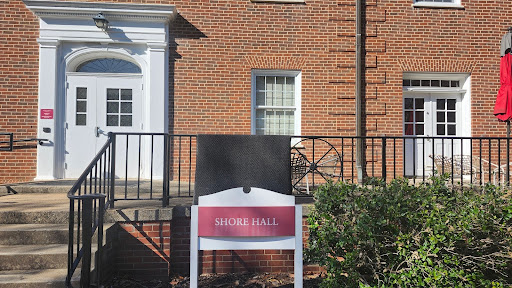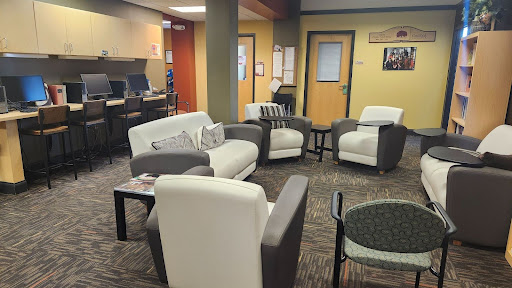Sexual assault and campus justice
This article is the last part of a series highlighting Guilford College’s sexual assault policies.
Restorative justice has several elements that distinguish it from the traditional criminal justice system. Central to its philosophy is the involvement of all parties who have been affected rather than just the accused. When discussing the harm that has been done, restorative justice creates an opportunity for healing and repairing relationships, rather than isolating and vilifying those who have been accused of creating harm.
“This process can be applied to the college community in a number of ways to repair fractured relationships and build trust,” said Assistant Professor of Justice and Policy Studies Krista Craven. “However, when it comes to dealing with sexual violence, the safety and well-being of victims should be the priority. I believe they should not have to face their offenders in restorative processes or on campus in general.”
Restorative justice’s purpose on campus is to give victims choice over their own redress and serve as an alternative method of punishment. But for some the aggrieved sufferers of sexual assault, the principles of restorative justice have not achieved their stated goals.
“This school needs to expel folks who commit sexual assault and are found guilty,” said a student who was sexually assaulted in spring 2014. “This is not the time for restorative justice. They need to leave our community permanently.”
Assistant Professor of Psychology Sarah Estow is critical of allowing perpetrators to remain.
“It can be extremely upsetting,” said Estow. “If the attacker is still on campus, the victim never knows when he or she may cross paths with them. Given how social circles overlap on college campuses, it’s more likely and, therefore, more disquieting. This can result in self-isolation as a means of self-protection, which can interfere with seeking social support.”
Campus Life, meanwhile, told The Guilfordian that the College’s increase in reported sexual assault cases shown in the past 10 years of security and fire safety reports parallels similar increases experienced at other colleges.
In five years of such reports, 10 colleges that were or are still under investigation by the U.S. Department of Education picked at random showed such increases in sexual assault instances. They were not as abrupt as Guilford’s recent rise, which leaves room for discussion.
Nationwide, low arrest and conviction rates for sexual assault have discouraged individuals who are sexually assaulted from reporting it to police for fear they will not be believed, leading to many perpetrators of sexual violence escaping punishment.
“In this sense, restorative justice processes could be adapted such that it’s not based on victim-offender dialogue, but rather, creating spaces of healing for survivors of sexual violence that do not involve offenders,” said Craven “There are also restorative programs for sexual offenders. These programs create mechanisms of support and accountability for sexual offenders to reduce the chances of them re-offending.”
One example of a restorative program is the Committee on Sexual Assault Prevention.
According to a 2013 National Research Council study, sexual assault incidents are underreported. Without the necessary college victim resources, law enforcement and support service agencies are often unable to give survivors the help they need.
“As long as we as a community continue to make victim-blaming statements, such as, ‘She put herself in this situation,’ … (and) ‘She didn’t fight back. She must have wanted it,’ we will continue to see rapes go unreported,” said Amber Stevenson, a clinical supervisor and therapist at the Nashville Sexual Assault Center in Nashville, Tennessee, to USA Today. “We have to stop blaming the victim. The conversation needs to shift to the person who chose to rape.”




